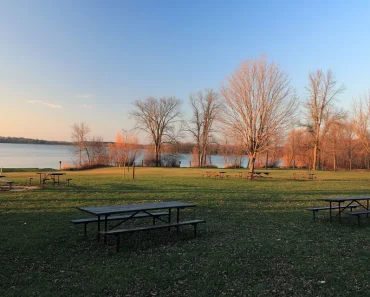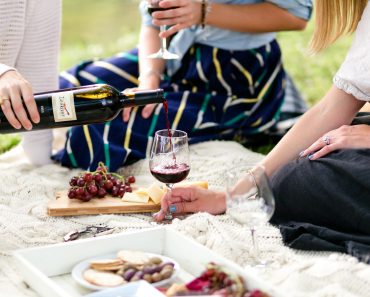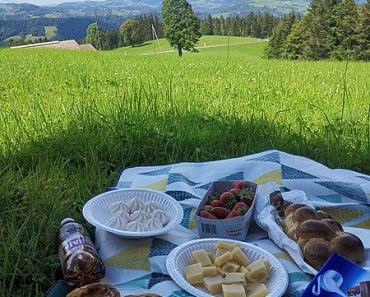Summer is here, and picnic season has arrived. It’s easy to become caught up in the excitement while socializing with family and friends, unintentionally cross-contaminating food or forgetting to pack enough ice for your cooler. Unfortunately, one little mistake may sicken your entire party, making you a disliked host! Every year, one in six Americans gets sick from contaminated meals. By avoiding these seven frequent picnic meal mistakes, you can lower your chances of contracting food poisoning.

1.) Failed to Wash Your Hands
If people washed their hands more frequently when cooking, a significant number of foodborne illnesses would be prevented. Before cooking, handle raw meat, and before eating or serving food, wash your hands. If there is no running water at your picnic site, bring a hand sanitiser and apply it to all areas of your hands, including between fingers and around nails.
2.) You Did Not Begin With a Clean Slate
Fresh, cold meat and poultry should be kept clean in addition to your hands. Juices from uncooked meats and birds might seep into your cooler if you’re not careful. Washing reusable bags before putting food in them helps to keep bacteria at bay. Keep your picnic food in clean, tightly sealed containers.
Wash fruits and vegetables at home before bringing them to your picnic location if you won’t have access to running water. Wash produce whether you plan on peeling it or not; germs can be transferred from the knife or peeler to the edible section.
3.) You Cross-Contaminated
If you can’t wash plates, tongs, and serving utensils at the picnic site, bring two pairs: one for handling raw meats and another for serving cooked foods. It’s a good idea to keep ready-to-eat food like buns, fruits, vegetables, and side dishes away from sickening serving utensils.
Also, unless it’s been boiled beforehand, don’t reuse a marinade that was used on raw meat, seafood or poultry. Finally, remember to pack your cooler carefully. Fruit, vegetables, and cooked meals should be kept away from raw meat, poultry, and fish as much as possible.
4.) Your Cooler has Lost its Cool
Even an insulated cooler will not keep food cold on its own. Fill your cooler three-quarters of the way full with food, leaving one-quarter of the space for ice packs. Before placing items in your cooler, chill or freeze them as much as possible. Cold and hot meals should be kept separate.
If you’re packing a picnic lunch, be sure to include an appliance thermometer inside the cooler and check it often throughout the day, until it doesn’t exceed 40°F. Consider packing drinks in a separate cooler. You may keep the perishable food cooler closed while the beverage cooler is frequently opened and shut.
5.) You Repurposed Ice
If you’re bringing ice to make drinks with, put it in a separate sealed bag. Do not place loose ice in beverages to keep them cool. Ice used to keep food cold might pick up odourless, invisible germs from the surfaces of food containers or other goods in the cooler.

6.) You Forgot to Bring a Food Thermometer
To control germs, meat must be cooked to specific temperatures. The minimum internal temperature for burgers is 160°F. Chicken breasts and legs must be cooked to a minimum of 165°F.
There are several incorrect and correct methods to take the temperature of the meat. If you check a chicken breast with the thermometer touching a bone, for example, you’ll get a false indication. When testing hamburgers, make sure to test them in the thickest area possible. Here are some more vital food thermometer techniques.
7.) You Let the Food Sit Out
Keep perishable picnic food out of the danger zone – a temperature range of 40°F and 140°F. Bacteria can double in number every 20 minutes when food is kept in the danger zone. Unfortunately, you cannot tell if a meal has germs or poisons growing inside it based on sight, smell, or taste. Ice or ice packs should be used to keep the temperature below 40°F in an insulated cooler. Instead of storing your car’s hot trunk, transport the cooler in the back seat. Only as much raw flesh as will fit on the grill should be removed from the cooler.
Don’t let food sit out for more than two hours. If the temperature outside is 90°F or higher, food should only sit out for an hour at most. When you’re doing nothing, it’s easy to forget about the passing of time. To remind yourself when it’s time to put food away, bring a timer or set an alarm on your phone. It’s not just meat that can make you sick; all perishable foods should be closely monitored, especially egg salads with mayonnaise and dairy-based dishes like tuna salad.
Before you fill the picnic basket, keep these simple hints in mind to avoid pests from attending your dinner.


